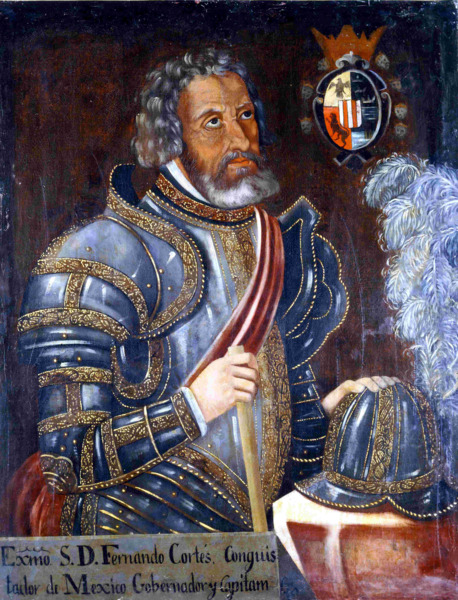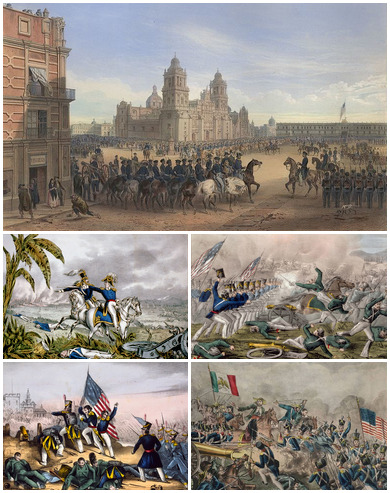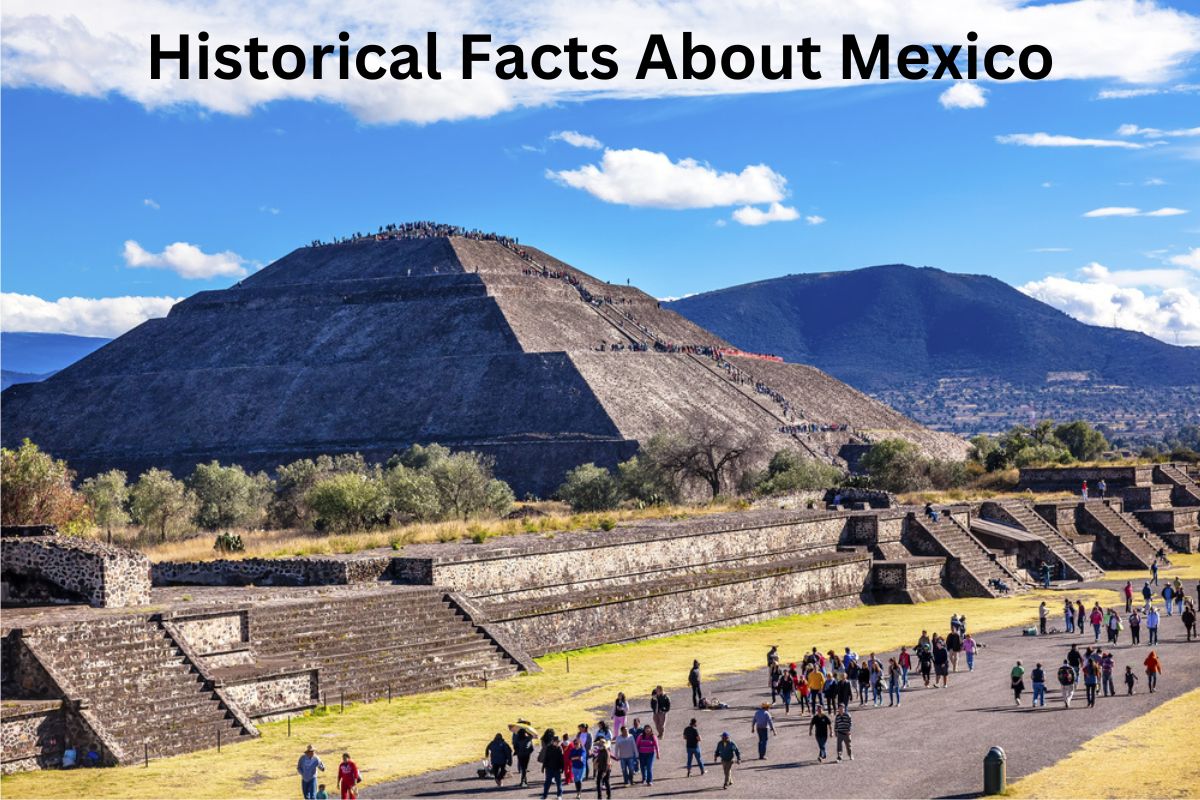Mexico, a country rich in history and culture, has a diverse and fascinating past that spans thousands of years. From ancient civilizations to colonial rule, revolutionary movements, and cultural contributions, Mexico’s historical narrative is filled with remarkable events and influential figures.
Exploring historical facts about Mexico provides valuable insights into its heritage and the forces that have shaped its present-day society.
From the rise and fall of ancient civilizations like the Maya and Aztecs to significant milestones such as the Mexican War of Independence and the Mexican Revolution, Mexico’s history is a tapestry of conquest, resistance, cultural achievements, and political transformations.
Understanding these historical facts deepens our appreciation for the country’s vibrant traditions, art, and customs.
Facts About Mexico’s History
1. Mexico has a rich history of ancient civilizations, including the Olmec, Maya, and Aztec civilizations
Mexico is home to several ancient civilizations that played a significant role in shaping Mesoamerican history.
The Olmec civilization, which emerged around 1500 BCE, is considered one of the earliest complex societies in the region.
The Maya civilization, known for its advancements in astronomy, mathematics, and architecture, thrived in southern Mexico and Central America from about 2000 BCE to 1500 CE.
The Aztec civilization, founded in the 14th century, established the powerful city-state of Tenochtitlan, known for its impressive structures, such as the Templo Mayor.
2. The capital city of the Aztec Empire, Tenochtitlan, was founded in 1325 and is now present-day Mexico City
Tenochtitlan was the capital city of the Aztec Empire and was founded in 1325 on an island in Lake Texcoco. It was an engineering marvel, with causeways connecting the city to the mainland and intricate canal systems.
At its peak, it was estimated to have a population of around 200,000 to 300,000, making it one of the largest cities in the world at the time. The city was adorned with grand temples, palaces, and vibrant markets.
3. In 1521, the Spanish conquistador Hernán Cortés conquered the Aztec Empire
In the early 16th century, Spanish conquistador Hernán Cortés led an expedition to Mexico, where he encountered the Aztec Empire.
With the help of indigenous allies who opposed Aztec rule, Cortés waged war against the Aztecs and ultimately captured their capital city, Tenochtitlan, in 1521. This marked the beginning of Spanish colonization in Mexico, which lasted for nearly three centuries.

4. Mexico gained independence from Spain on September 16, 1810
The Mexican War of Independence began on September 16, 1810, when the Catholic priest Miguel Hidalgo y Costilla issued the “Grito de Dolores,” a call to revolt against Spanish rule. This event is considered the catalyst for Mexico’s struggle for independence.
The war continued for over a decade, led by various revolutionary leaders such as José María Morelos and Agustín de Iturbide. Finally, on September 27, 1821, the Spanish Viceroy agreed to the Plan of Iguala, which recognized Mexico as an independent country.
5. From 1846 to 1848, Mexico engaged in the Mexican-American War with the United States
The Mexican-American War, fought between 1846 and 1848, was a conflict between Mexico and the United States. The main cause of the war was the dispute over the Texas-Mexico border.
Following the Texas Revolution in 1836, Texas gained independence from Mexico and sought annexation by the United States. Mexico considered the annexation of Texas a violation of its territorial sovereignty, leading to hostilities.
The war concluded with the Treaty of Guadalupe Hidalgo, in which Mexico ceded significant territories, including California, Nevada, Utah, Arizona, New Mexico, and parts of Colorado and Wyoming, to the United States.

6. Cinco de Mayo is celebrated on May 5th each year to commemorate the Mexican army’s victory over the French Empire at the Battle of Puebla in 1862
Cinco de Mayo is celebrated on May 5th each year to commemorate the Mexican army’s victory over the French Empire at the Battle of Puebla in 1862.
Also Read: Facts About Cinco de Mayo
The battle was a significant moment during the French intervention in Mexico, as the Mexican forces, led by General Ignacio Zaragoza, successfully defended the city of Puebla against a much larger and better-equipped French army.
While the victory was not a decisive turning point in the overall conflict, it symbolized Mexican resilience and became a source of national pride.
7. The Mexican Revolution was a major armed struggle that took place from 1910 to 1920
The Mexican Revolution was a complex social and political movement that took place from 1910 to 1920. It was a response to the long-standing dictatorship of Porfirio Díaz, who ruled Mexico for over three decades. The revolution was characterized by various factions and leaders with differing goals and ideologies.
Emiliano Zapata, a leading figure in the revolution, championed agrarian reform and advocated for the rights of peasants. Pancho Villa, another influential revolutionary, led a successful military campaign in the northern regions of Mexico.
The revolution resulted in the overthrow of Díaz, the drafting of a new constitution in 1917, and significant social and land reforms.
8. Two prominent figures during the Mexican Revolution were Emiliano Zapata and Pancho Villa
Emiliano Zapata and Pancho Villa were two prominent leaders during the Mexican Revolution, each representing different causes and regions. Zapata, a charismatic figure from the southern state of Morelos, advocated for agrarian reform and fought for the rights of peasants.
He is best known for his slogan “Tierra y Libertad” (Land and Liberty) and his involvement in the agrarian movement, aiming to reclaim land taken from indigenous communities and redistribute it to peasants. Pancho Villa, on the other hand, commanded a formidable military force in the north of Mexico.
He led the Division del Norte and conducted military campaigns against various forces, including both Mexican government troops and foreign interventionists. Villa’s actions often aimed at securing power and resources for his own cause and region.
9. The Institutional Revolutionary Party (PRI) dominated Mexican politics from 1929 to 2000
The Institutional Revolutionary Party (PRI) played a significant role in Mexican politics from its founding in 1929 until the early 2000s.
The PRI was the dominant political party during this period, and its governance was marked by a combination of authoritarian practices, patronage systems, and state-led development policies. The PRI maintained stability through its control of key political and social institutions, but it also faced criticism for its lack of democracy and widespread corruption.
In 2000, Vicente Fox from the National Action Party (PAN) became the first non-PRI candidate to win the Mexican presidency in over 70 years, signaling a significant shift in Mexican politics.
10. In 1994, Mexico, the United States, and Canada signed NAFTA, creating a trilateral trade bloc
NAFTA was a trilateral trade agreement signed in 1994 by Mexico, the United States, and Canada. The agreement aimed to promote economic integration and free trade among the three countries. NAFTA eliminated most tariffs and trade barriers, facilitating the flow of goods and services across the borders.
While the agreement brought economic benefits to Mexico, such as increased foreign investment and export opportunities, it also generated debates regarding its impact on labor rights, environmental regulations, and the agricultural sector.
In 2020, NAFTA was replaced by the United States-Mexico-Canada Agreement (USMCA), which introduced some modifications to the original agreement.
11. The Maya civilization flourished in the Yucatán Peninsula and other parts of present-day Mexico from approximately 2000 BCE to 1500 CE
The Maya civilization, one of the most iconic ancient cultures of Mesoamerica, thrived in what is now Mexico, Belize, Guatemala, Honduras, and parts of El Salvador during different periods. They excelled in various fields, including agriculture, architecture, mathematics, astronomy, and hieroglyphic writing.
The Maya built magnificent cities with towering pyramids, intricate temples, and impressive observatories. They developed a sophisticated calendar system and made significant advancements in mathematics, including the concept of zero.
The ruins of Maya cities such as Chichen Itza, Tikal, and Palenque continue to fascinate and attract visitors today.
12. Celebrated on November 1st and 2nd, the Day of the Dead (Día de los Muertos) is a traditional Mexican holiday
The Day of the Dead, or Día de los Muertos, is a unique Mexican holiday celebrated on November 1st and 2nd. It is a time for families and communities to honor and remember their deceased loved ones. The belief is that during this time, the spirits of the departed return to be reunited with their families.
Altars, known as ofrendas, are created in homes and cemeteries, adorned with photographs, favorite foods, marigolds, candles, and other symbolic items. Families gather to reminisce, share stories, and pay their respects.
The Day of the Dead is a vibrant and colorful celebration that showcases the Mexican cultural belief in the cycle of life and death.
13. In the early 20th century, Mexico witnessed a vibrant artistic movement known as Mexican muralism
Mexican muralism emerged as a significant artistic movement in the early 20th century, following the Mexican Revolution. It was characterized by large-scale mural paintings that aimed to convey social and political messages to the masses.
Artists such as Diego Rivera, David Alfaro Siqueiros, and José Clemente Orozco used murals to depict Mexico’s history, indigenous culture, and social struggles. The murals often addressed themes of social justice, land reform, and the rights of the working class.
Mexican muralism played a vital role in shaping the identity of modern Mexican art and remains an influential artistic legacy.
14. Frida Kahlo, a renowned Mexican artist, is celebrated for her powerful and introspective self-portraits
Frida Kahlo, born in 1907, was a Mexican artist known for her powerful and introspective self-portraits. Her art was deeply influenced by her personal experiences, including physical and emotional pain resulting from a bus accident in her youth and her turbulent relationship with renowned Mexican painter Diego Rivera, whom she married.
Kahlo’s paintings often depicted themes of identity, feminism, and Mexican culture. She embraced her indigenous heritage and dressed in traditional Tehuana clothing, which became an iconic part of her image.
Today, Frida Kahlo is celebrated as one of the most influential artists of the 20th century, and her work continues to resonate globally.
15. Mariachi music is a traditional Mexican genre characterized by vibrant rhythms and melodious tunes
Mariachi music is a vibrant and traditional genre that originated in the western states of Mexico, particularly in Jalisco. It is characterized by the use of various musical instruments, including guitars, violins, trumpets, and a distinctive high-pitched folk harp.
Mariachi bands typically dress in elaborate charro outfits, which consist of ornate, embroidered suits and wide-brimmed sombrero hats. Mariachi music represents the lively and celebratory spirit of Mexican culture, often performed during festive occasions such as weddings, birthdays, and national holidays.
It has gained international recognition and has become synonymous with Mexican identity. The genre’s infectious rhythms and emotive melodies continue to captivate audiences worldwide.
